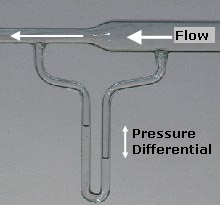This was my preferred method but because this is 2-1/2" piping and those are couplings over 2-1/2" piping, there's no saddle big enough to go over a coupling that size.
Ah, OK, now I get it. I missed that.
You may or may not want to, but there is a workaround. The plumber made use of the
outside of all the valve ports, gluing on 2.5" couplers. But the reality is, all those valves have smaller inside diameters. You could cut off that coupler, right at where the end of the valve port is, and again right at the end of the fixture going into the pump, then glue in a length of 2" PVC pipe, to the
inside of the valve port, and the inside of the pump fixture, and then you'd have a length of 2" pipe for your saddle. This is assuming the inside of each has never been used before, and are both clear of glued-in PVC pipe. You could check that visually by disassembling the valve, and pump union, to make sure the inside of each port is good-to-go.
@mas985 can advise if the very slight restriction this would create would make any real world difference or not...
The valves are designed to be able to accept both a 2" pipe and a 2.5" coupler.

Low PH (<7) for a SWG energized or not is still an issue IMHO. The plates can degrade with or without current due to the lower PH (i.e. metal reacts to lower PH). This is the same reasoning why you want to avoid cleaning the cell in acid too often even when it is diluted.
I've always assumed that the amount of flow through the SWG is high enough that the amount of acid being added, at the rate it's being added, is small enough, and happening fast enough, that damage to the SWG plates would be negligible. I don't have any proof of that, just an instinct.
I found it interesting that Dirk mentioned the Pentair instructions have the injector before the SWG because there's still going to be low PH regardless of the cell being on or off. My
The damage to the plates aside, I think the primary reason they engineered this is to avoid mixing acid and chlorine together, which forms a toxic gas. I don't actually know this for sure, just another assumption of mine, but we've been taught never to mix those two chemicals, even under the surface of the pool water. Remember? Dose chlorine and acid at least 15 minute apart? Well, pumping acid into a chlorine-producing SWG is mixing them together about as good as one could.
pump running at low RPM does about 20gpm. With 50% diluted acid, and how slow it doses, I'm wondering what the PH would temporarily be while it is dosing. I don't even know how I'd measure that to see if it's safe or not.
Would this work? While the flow from the return manifold, while the acid was also passing through it, would be divided between all the returns, the return closest to the pad would get the brunt of the mixture. If that return has an eyeball fixture, and therefore a 1.5" threaded recepticle, if would be fairly easy to temporarily remove the eyeball and attach a PVC threaded adapter, which you could then run out of the water with a hose or PVC pipe, and then collect that water for pH testing.
Mark has the math for you, which is likely simpler, but actually testing the water would tell the real-world story. The pic you posted doesn't show all of the return manifold. If there is a way to shut off all but one return, so much the better.
Maybe manufacturers are not concerned about premature failure of their SWG or have determined it is safe?
Or they want to sell you more SWG cells.

This is a good example of what I meant by "I'll admit [manufacturers] are never to be trusted 100%." Just how much they'd care about premature wear on a product they profit from greatly by selling you another one, unfortunately can't really be known...











